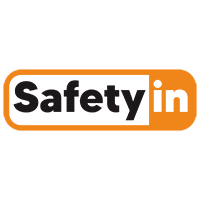In places where things move quickly, like construction sites, roads, or factories, it is very important to be able to see. That's why high-visibility (hi-vis) clothing—especially vests—are more than just a workplace requirement. They are a product of science, carefully designed to keep people safe. But what exactly makes those neon vests and reflective strips so effective? Let's look at the science behind bright colors and shiny materials.
The reasons why high-visibility colors work
Hi-vis clothing usually comes in bright, fluorescent colors like neon yellow-green, orange-red, and lime green. These aren't just chosen randomly – they're picked based on how the human eye sees color.
1. Fluorescent pigments make daylight brighter.
Fluorescent colors work by absorbing ultraviolet (UV) light (which is not visible to the human eye) and re-emitting it as visible light. This makes the material look brighter, especially when there is not much light, like at dawn, dusk, or in cloudy weather.
2. The best visibility for the human eye.
The human eye is most sensitive to yellow-green light, which has a wavelength of about 555 nanometres. That's why neon yellow-green is often the most effective hi-vis color during daylight. Orange-red is another popular choice, especially for workers who need to stand out in green surroundings like forests.
The role of reflective materials at night
Fluorescent colors don't work as well at night or in the dark. That's where retro reflective materials come in.
1. What is retro reflection?
Retro reflective materials are designed to bounce light back to where it came from. A mirror reflects light at an angle, but retro reflective surfaces send light back towards the light source, like the headlights of a car. This makes the person wearing it easy to see from far away.
2. How It Works
Most reflective tape or trim used in safety vests is made from layers of tiny glass beads or prismatic lenses in a polymer. These tiny structures bend and redirect light, so that it can go back to where it came from. Even a thin strip can make your car really stand out under headlights, making it much easier to see.
High-Visibility Standards and Safety Classes
In many industries, there are rules about what workers can wear. For example, ANSI/ISEA 107 in the U.S. defines different levels of visibility.
- Class 1: Low-risk jobs (e.g., parking attendants)
- Class 2: Medium-risk areas (e.g. construction workers near traffic)
- Class 3: High-risk jobs (e.g. people who work on the roads)
These standards specify how much fluorescent background and reflective material is needed on workers' clothes to make sure they are safe.
Why custom safety vests are important
If you're kitting out a team or workforce, understanding the science behind visibility can help you choose the right custom safety vests. These details are important. They can help you choose the best color for your worksite. They can also help you follow safety standards and add your company's branding without making it hard to see.
Do you want to personalise your high-visibility vests with logos, colors or safety features? Get in touch today to design equipment that keeps your team safe and visible.


